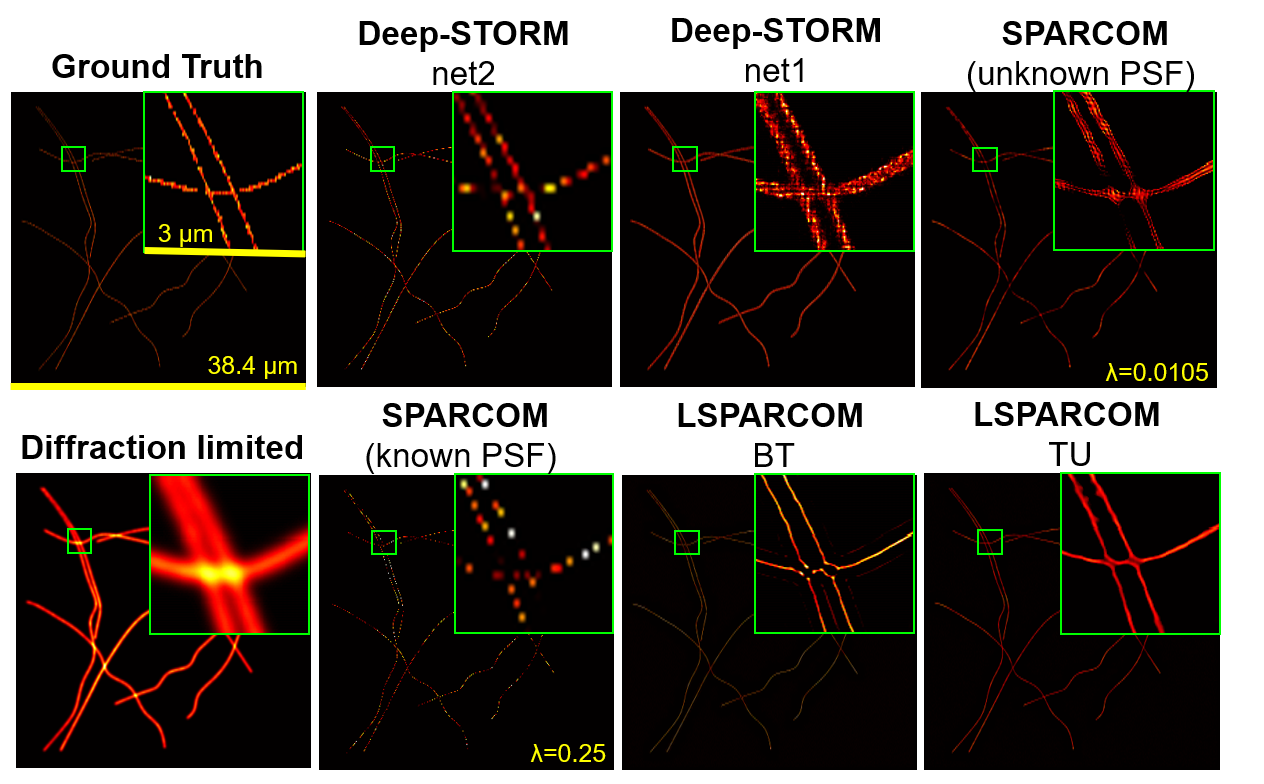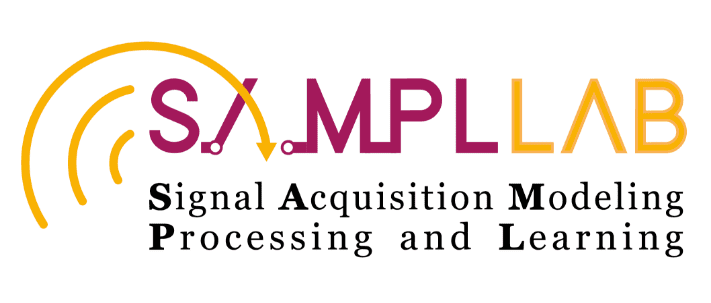Learned SPARCOM:Unfolded Deep Super-Resolution Microscopy
Gili Dardikman-Yoffe and Yonina C. Eldar
Introduction
The use of photo-activated fluorescent molecules to create long sequences of low emitter-density diffraction-limited images enables high-precision emitter localization. However, this is achieved at the cost of lengthy imaging times, limiting temporal resolution. In recent years, a variety of approaches have been suggested to reduce imaging times, ranging from classical optimization and statistical algorithms to deep learning methods.
Classical methods often rely on prior knowledge of the optical system and require heuristic adjustment of parameters or do not lead to good enough performance. Deep learning methods proposed to date tend to suffer from poor generalization ability outside the specific distribution they were trained on, and require learning of many parameters. They also tend to lead to black-box solutions that are hard to interpret.
In this software, we combine a recent high-performing classical method, SPARCOM, with model-based deep learning, using the algorithm unfolding approach which relies on an iterative algorithm to design a compact neural network considering domain knowledge.
The resulting network, Learned SPARCOM (LSPARCOM), requires far fewer layers and parameters, and can be trained on a single field of view. Nonetheless it yields comparable or superior results to those obtained by SPARCOM with no heuristic parameter determination or explicit knowledge of the point spread function, and is able to generalize better than standard deep learning techniques. It even allows producing a high-quality reconstruction from as few as 25 frames. This is due to a significantly smaller network, which also contributes to fast performance - 5x improvement in execution time relative to SPARCOM, and a full order of magnitudes improvement relative to a leading competing deep learning method (Deep-STORM) when implemented serially.
Our results show that we can obtain super-resolution imaging from a small number of high emitter density frames without knowledge of the optical system and across different test sets. Thus, we believe LSPARCOM will find broad use in single molecule localization microscopy of biological structures, and pave the way to interpretable, efficient live-cell imaging in a broad range of settings.

References
- G. Dardikman-Yoffe and Y. C. Eldar, "Learned SPARCOM: Unfolded Deep Super-Resolution Microscopy", Optics Express, vol. 28, issue 19, pp. 27736-27763, September 2020.
Software Download

